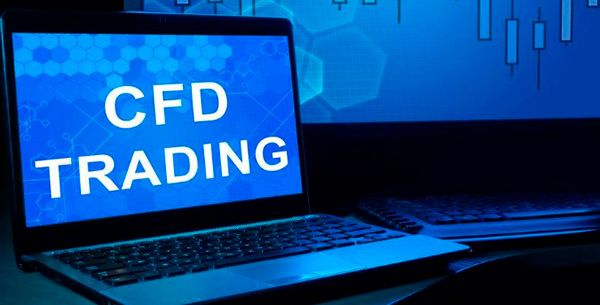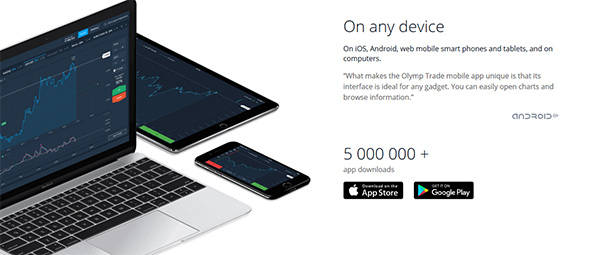Your Complete Guide to CFD Trading
Trading and investing continues to evolve as financial technology evolves first. Even a decade ago, many of the trading products you see today were unavailable. Fast-forward to today and there is essentially anything you can think of. From binary options to Exchange Traded Funds, odds are you’ll find what works best for you. One product that has risen in popularity is a CFD or Contract for Difference.
What is a CFD?
First, you’ll need to understand a CFD if you don’t already. A Contract For Difference is an agreement between a buyer and seller to trade a contract based on an underlying stock. Even though it’s based upon an underlying asset there are no rights to the asset and the contract is not collateralized by said asset. These products are available in Europe are allow traders and investors to gain market exposure with less upfront capital.
What is CFD Trading?
Now that you have an understanding of what a CFD is now you can move forward and understand how they’re traded. Many of the most popular assets on the market will have a corresponding CFD through many brokers. If you’re interest in stocks, indices and even cryptocurrencies there is likely a CFD for you.
When trading a CFD, you’ll want to check with your broker to ensure they support CFD trading. With many, you have the ability to trade on margin, which allows you to purchase more with less initial capital. However, keep in mind that you can lose more than your initial investment should the market move against you.
You trade CFD’s similar to any asset by buying or shorting, depending on your market bias.
How Much Can You Make?
When it comes to trading a CFD you can make as much or as little as you want, depending on your trading strategy. Keep in mind though there are slight pricing difference between the CFD and the underlying asset. This is due to spread costs, fees and other minor differences that will cause the price of the product to be different than the underlying asset.
As mentioned before, many brokers do offer the ability to leverage, which can magnify your earnings but also magnify your losses. Ensure you have a complete and solid understanding of the CFD product, and the costs related to your broker before trading.
What is the Risk?
As with any financial instrument or product there is risk. Without risk there wouldn’t be any returns, however, it is important to understand the different risk factors pertaining to the CFD product.
The first is it is a derivative. What that means is the trading or investment product is derived from an underlying asset, i.e. a stock or cryptocurrency. Furthermore, the derivative doesn’t have any backing accept for the faith you have in the company issuing the CFD. This may require you to complete your own due diligence on the company to understand if they are a trustworthy company.
Second is you can leverage. Leveraging can be a useful tool to expedite the account building process, but it can equally destroy your portfolio, leaving you back at square one. When trading CFD’s with leverage, ensure you have proper funds to cover any losses, as they may potentially be greater than your initial investment.
Third is your trust the financial soundness of your financial institution. Alluded to in the derivative paragraph, a CFD has nothing backing the product except for faith in the financial institution. While this isn’t necessarily a bad thing, it does require you to be more aware of whom you use for brokerage services. For example, if you bought a CFD and the company went bankrupt or failed to pay you, there is nothing that is backing that company.
CFD Trading Regulation
Trading regulation can add a level of confidence when trading or investing in derivative products. Simple because they are derivatives doesn’t make them a bad product. When selecting your broker, you’ll likely want to understand the various regulations surrounding them.
First off, this product is not available in the United States, but it is popular throughout Europe. CySEC is one of the most popular regulators within the European market and they allow the trading of CFD’s but do have limitations in place. As for other countries such as France, they have put a ban on the product all together, likely due to their risky natures and low barrier of entry.
A motivating factor to this strict of regulation can be attributed as mentioned to the risk nature of the product, as well as the high rates of losses on the products. If used incorrectly or in a gambling measure, you will likely lose your investments quickly.
CFD vs Options
A comparison that is made frequently is a CFD and an options contract. There are several main differences that make them very different. While both can help you generate alpha quicker, it’s important to know the following differences.
- First is one is collateralized while the other is not. When you trade a CFD you are trading a derivative that is uncollateralized, meaning there is no asset backing the product. With an option contract, that is backed by the stock of the company it is based upon. For example, if you were to purchase an options contract of Apple, that gives you the right but not the obligation to obtain 100 shares of Apple at the strike price.
- Secondly, options are often more cost effective. When it comes to CFD’s the spreads may be a little wider. This is on purpose so the broker can make money as well as since it’s a derivative the market is slightly different. With an option, the market is typically liquid and bid ask spreads are close as long as the option is highly traded.
- Lastly, options are available more widely than CFD’s and are likely to have a liquid market. While CFD’s are popular in other countries, option contracts are widely accepted. In the United States, options are highly regulated, and you can rest assured that you are guaranteed to be paid out one way or another should your options contract expire in the money.
Popular CFD Trading Strategies
If you can find a way, there is likely a strategy out there. However, CFD’s can be used in a way that benefits your portfolio. While risky, if implemented properly CFD’s can bring an added benefit to your investment plan.
First, CFD’s can be a great way to hedge against a position. For example, if you go long by purchasing stock of XZY, and you feel in the short term that XZY is going to retrace you can purchase a CFD to hedge yourself for the near term. Same can be said if you go short a position and need to hedge against the market turning for the near term.
Another way to use CFD’s is to swing trade, which is typically a medium length investment that can span a few days to a few weeks. While trading with traditional products may be an option, utilizing CFD’s and their leveraging abilities can help you grow your portfolio quicker.
What is a CFD Broker?
A CFD broker is exactly what you think. It is a broker that specializes in CFD products and allows you to buy and sell CFD products. The broker isn’t a market maker but can facilitate the market by connecting willing buyers and sellers.
There are many brokers on the market, and each have their benefits and drawbacks. Also, ensure you check the pricing for each broker because while they sell the same product, some may offer their users a better deal.
How do CFD Brokers Make Money?
CFD brokers make money typically in two ways. The first is by commissions on the trade itself. For example, your broker may charge you a percentage or flat rate per trade. That means every time you submit a trade the broker makes money.
The second way a broker makes money is through interest on leveraged positions. As you likely know, leveraging yourself isn’t free of charge. Depending on the amount of leverage and the length of the position that will determine how much you are charged.
There may be smaller fees within the details, but these are two of the main ways brokers earn income from you trading on their platform.
FAQ
Is CFD Trading Legal in my Country?
Currently, CFD’s can be traded in Australia, the United Kingdom, Euro Zone, Japan, Canada, South Africa, Switzerland, New Zealand and many other countries. Consult your financial regulator for more information on tradability.
Popular countries such as the United States currently do not allow CFD trading.
Is CFD Trading Safe?
CFD trading involves high amounts of risk and if used without proper education can lead to loss of capital and losses could even greater than the capital you deposited if you are leveraged.
While risky, if you find a regulated broker the product itself is relatively safe. Remember that these are derivatives and you have to trust the broker or company offering the product.
Are CFD Profits Taxable?
Every country has their own tax laws. The short answer is yes, but ensure you follow the current tax laws of the country you reside in. Incorrectly filing taxes can lead to issues later on should you be audited.
Are CFD Losses Tax Deductible?
Similar to are CFD profits taxable, each country is different, and you should consult your governing body for more information. Some countries do allow for deductions on losses but that may vary greatly.
Are CFD’s Halal?
Due to CFD’s containing an element of gambling, CFD’s are not recognized as Halal.
Which CFD Broker is the Best?
While there are several different brokers you can choose from, we’ll go over two that have the potential to be your next broker.
IQ Option
First is IQ Option, which provides you with important information right out of the gate such as CFD products and what markets they cover. From there you will see what programs they are compatible with and how you can utilize their platform. Further down the page you will see their awards and a description of what their platform has to offer.
Olymp Trade
Second on our brief broker list is Olymp Trade and same as the other, offer a welcoming and professional landing page. From there you’ll quickly find the assets they cover along with how you can utilize them to trade and access the markets.
What’s important is to find the right fit for you, based upon your trading needs. Also ensure that costs are within your range and they are regulated. A great way to learn each company is to request a demo account and test-drive the platforms. From there you’ll be able to make a well-informed decision.





